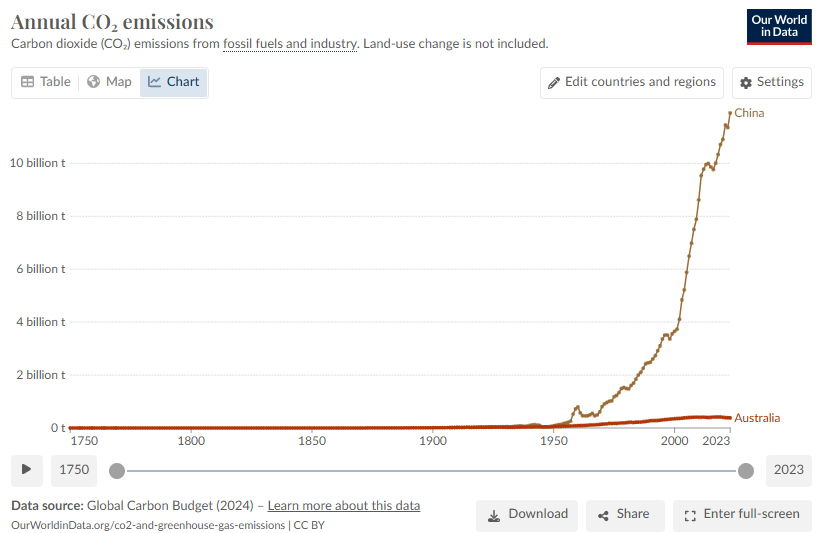AMP chief economist Shane Oliver published the following chart on Twitter (X) showing how Australia’s productivity growth lags well behind that of other OECD countries.
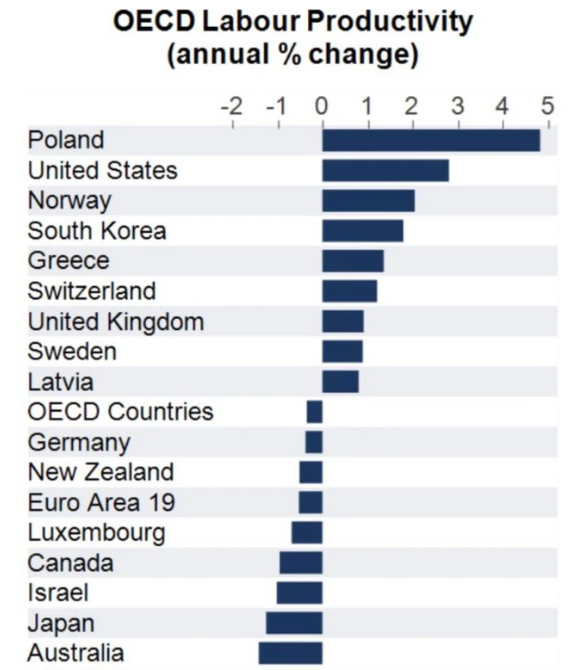
Source: Shane Oliver (AMP)
Oliver argues that the decline in productivity is the primary cause of the nation’s falling living standards, as evidenced by the world-record decline in real per capita household disposable income.
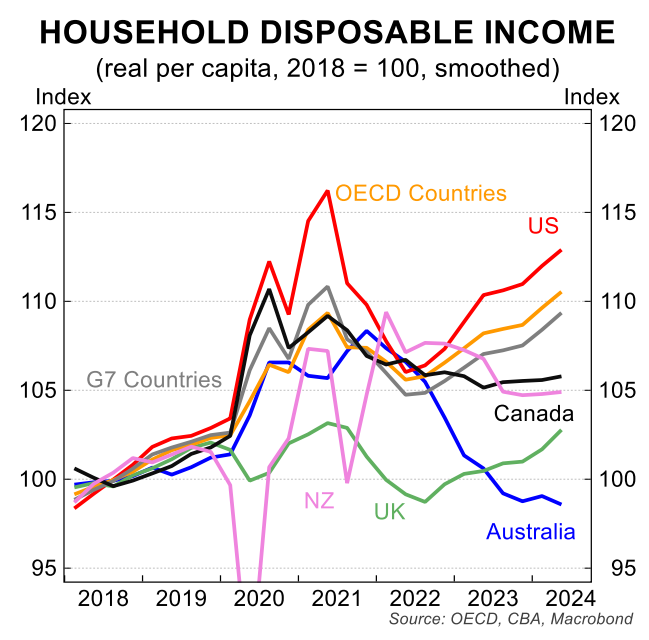
“Australian labour productivity growth running at the bottom of the OECD … it’s the basic reason why living standards are falling in Australia”, Oliver noted.
Oliver added that Australia’s productivity downturn is being exacerbated by government spending, which has risen to a record 28% of GDP.
“The surge in public spending is exacerbating Australia’s productivity slump with productivity down another 0.8% over the last year as private market sector productivity is invariably higher than public sector productivity and as public spending squeezes out private business investment, it is likely exacerbating the weakness in private market sector productivity”, he said.
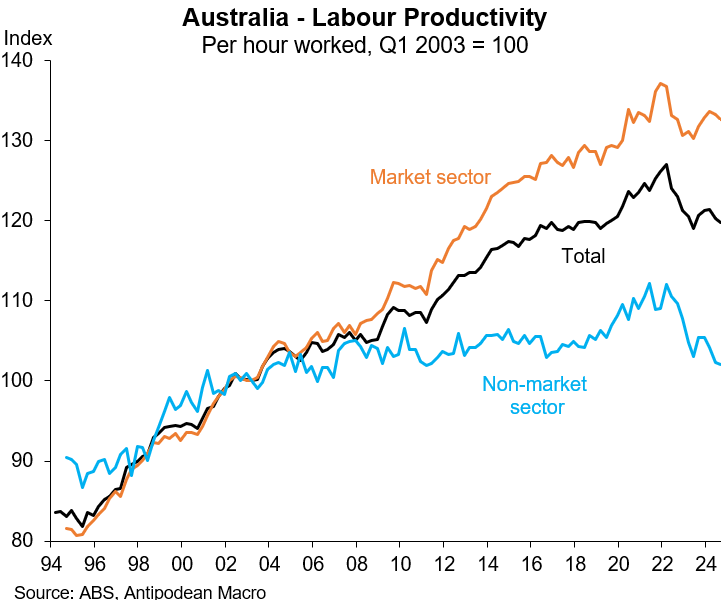
“And weak productivity growth makes it harder to get inflation down and will depress long-term growth in per capita GDP, and hence in living standards”.
“[Record public spending] has made the Reserve Bank of Australia’s job in controlling inflation harder because it’s kept demand in the economy higher than otherwise would have been the case, which has meant that interest rates have had to stay higher for longer to slow demand, and hence inflation, which in turn has meant that private spending has had to be squeezed by more than would otherwise have been the case”, he said.
“Households have paid for this by having to cut back their discretionary spending”.
“In other words, were it not for the surge in public spending inflation would now likely be lower and so too would the RBA’s cash rate”, Oliver said.
Oliver warned that “politically unpopular” policies will be needed to boost Australia’s productivity rate.
“Federal and state governments need to slow their spending to stop squeezing out private spending and do more to fundamentally boost productivity, which requires tax reform, labour market deregulation, competition reforms”, he said.
“And in the process work in tandem with the RBA rather than against it”.
“Unfortunately, its hard to be optimistic with a Federal election ahead”, Oliver said.
Another long-term driver of Australia’s declining productivity is “capital shallowing”, caused by the nation’s population expanding faster than business, housing, and infrastructure investment, leaving workers with less capital.
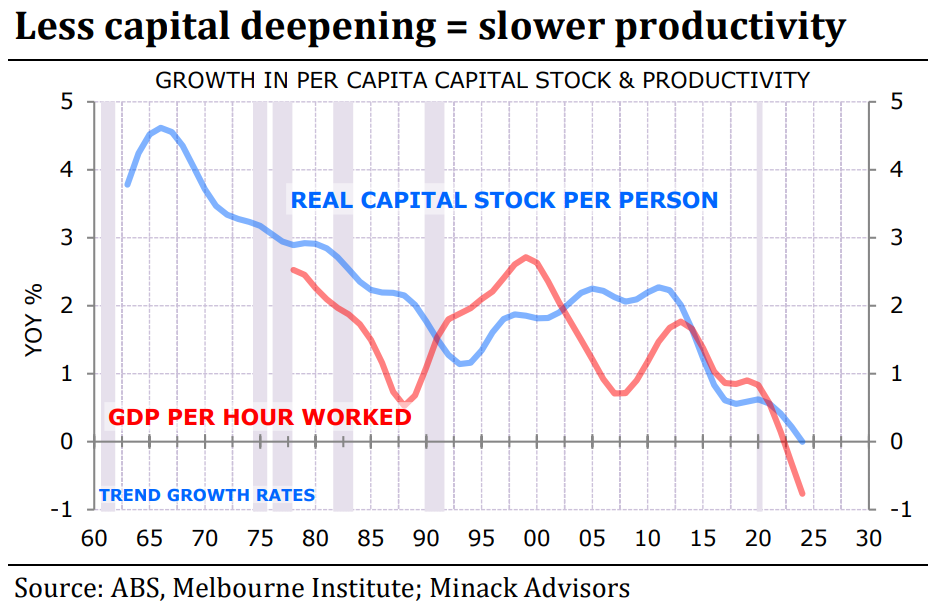
Another is the structural rise in Australian energy costs, which have shrunk the nation’s manufacturing sector, hollowed out the economy, reduced economic complexity, and eroded productivity.
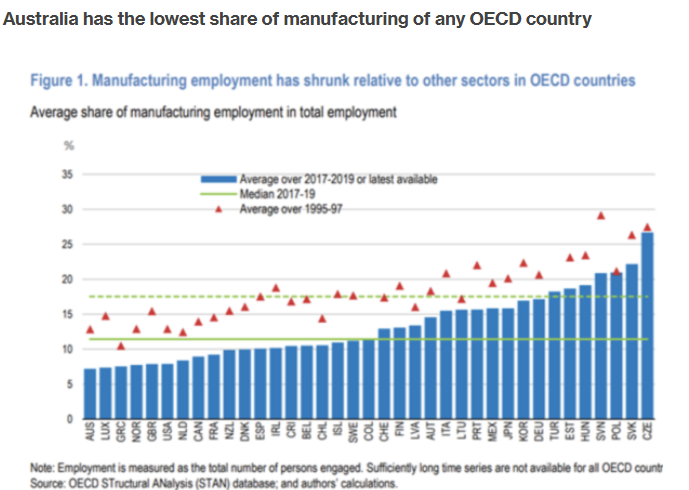
The solution to Australia’s productivity woes must also include significantly lower and more highly skilled immigration, domestic East Coast gas reservation, and the abandonment of costly “net zero” policies that drive up energy prices and merely export emissions to China.
